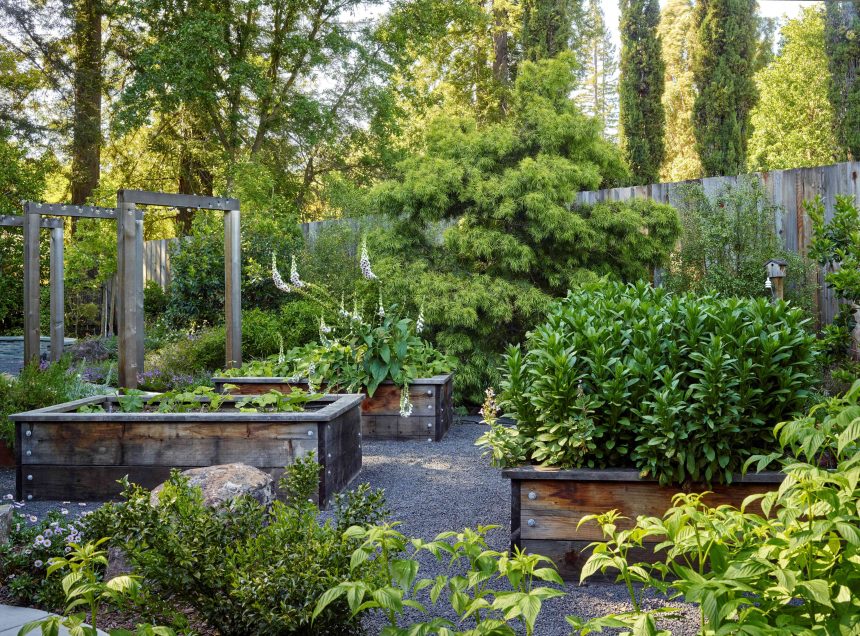Installing a raised bed garden can expand your growing space and allow you to grow veggies, herbs, and flowers even if your soil is poorly draining or packed with clay and rocks. But if raised gardens aren’t built properly or managed in the right way, they can be plagued with weeds, pests, and other problems. Whether you’re creating a new raised bed or managing an existing garden, here are 10 common raised bed gardening mistakes to avoid if you want your plants to thrive.
1. Growing in the Wrong Location
One of the best things about raised bed gardening is that it allows you to garden on top of paved surfaces and in other areas where you normally wouldn’t be able to grow plants. However, if you position a raised garden in a location that doesn’t receive enough sun or that’s prone to flooding and drainage problems, your plants are likely to fail. Remember, most edible plants need at least 6 to 8 hours of bright light per day.
2. Using the Wrong Materials
Raised bed frames can be constructed out of untreated wood, galvanized steel, stones, and other materials. But if you want to keep edible plants in your raised beds, it’s important to steer clear of treated lumber and other building supplies that aren’t safe for food gardens. Raised bed frames made from untreated, pine ledger board can be a great option if you want to make a DIY bed on a budget.
3. Making Beds Too Big or Small
Creating massive raised beds that hold lots of plants, or shallow beds that are easy on your wallet may sound like a good idea. But oversized beds can be difficult to maintain and beds that are too small can lead to stunted plant growth and other issues. While the recommended length and depth of raised beds will vary depending on the types of plants you’d like grow, keeping raised beds under 4 feet wide should make weeding easier.
4. Using Poor Quality Soil
Many gardeners are tempted to fill up raised beds with soil directly from their gardens. But unfortunately garden soil is quite dense, and using it in raised beds can lead to soil compaction and drainage problems. For better results, fill up raised beds with a store-bought raised bed soil mix or make your own DIY raised bed soil with 1 part topsoil and 1 part compost or other organic matter.
5. Growing the Wrong Plants
Most of our favorite veggies and herbs, as well as common perennial and annual flowers, can be grown in raised beds. However, big plants with large root systems—like corn, rhubarb, and artichokes —are often too big for raised bed gardening and they can be particularly problematic if your raised bed is located on a paved surface that inhibits the downward growth of roots. Beds that are at least 12 inches deep are suitable for most edible plants, including root veggies, while shallower raised beds are only recommended for shallow-rooted crops like lettuce and some herbs.
6. Letting Weeds Creep In
Although weeds are usually less problematic in raised beds than in-ground gardens, weeds can still invade raised gardens if you’re not careful. Adding weed barriers, like cardboard or kraft paper, to the bottom of raised beds should keep some weeds down, but you’ll still need to hand pull weeds regularly throughout the season. You can also manage weedy issues by keeping your soil covered with cover crops or natural mulches, like straw or wood chips.
7. Overcrowding Plants
Every gardener wants to squeeze lots of plants into their beds, but packing too many plants into a raised garden can cause plants to compete for resources and lead to water stress and stunted growth. What’s more, airflow is restricted when plants are sown too closely together and this can cause plant diseases, like powdery mildew, to spread. Following proper spacing guidelines and utilizing planting techniques like square-foot gardening is the best way to maximize your growing space without overcrowding your plants.
8. Not Replenishing Soil
Heavy feeding plants and harsh weather take their toll on garden soil and can cause raised gardens to become nutrient deficient over time. If poor soils aren’t replenished, it can lead to plant nutrient deficiencies and increase the need for fertilizers that are prone to leaching. The good news is that you keep raised bed soil rich and healthy and reduce the need for fertilizers by building your soil, from the top down, with an annual application of compost or aged manure.
9. Overwatering or Underwatering
Raised beds generally drain faster than in-ground gardens and you can end up with parched soil and wilted plants if you don’t stick to a regular watering schedule. However, overwatering can also occur in raised beds if you water too often or if your beds are installed in a poorly draining area. To ensure your plants receive the right amount of water, only water when the top 1 to 2 inches of soil feels dry, and drill drainage holes near the base of raised beds if they’re installed on top of a paved or other poorly draining surface.
10. Forgetting About Pests
There’s a common misconception that growing plants in raised beds keeps pests away. But while it’s true that pests are often less problematic in raised beds, voles can still burrow into raised gardens and nibble on plant roots, and soil-dwelling insects can build up in soil and create ongoing issues for gardeners. Luckily, you can reduce vole issues by installing hardware cloth across the base of raised beds and limit the spread of pest insects with organic growing techniques, like crop rotation and companion planting.
Building multiple raised beds makes crop rotation easier, but you can also rotate crops between different zones of your garden if you’re working with a single raised bed.







